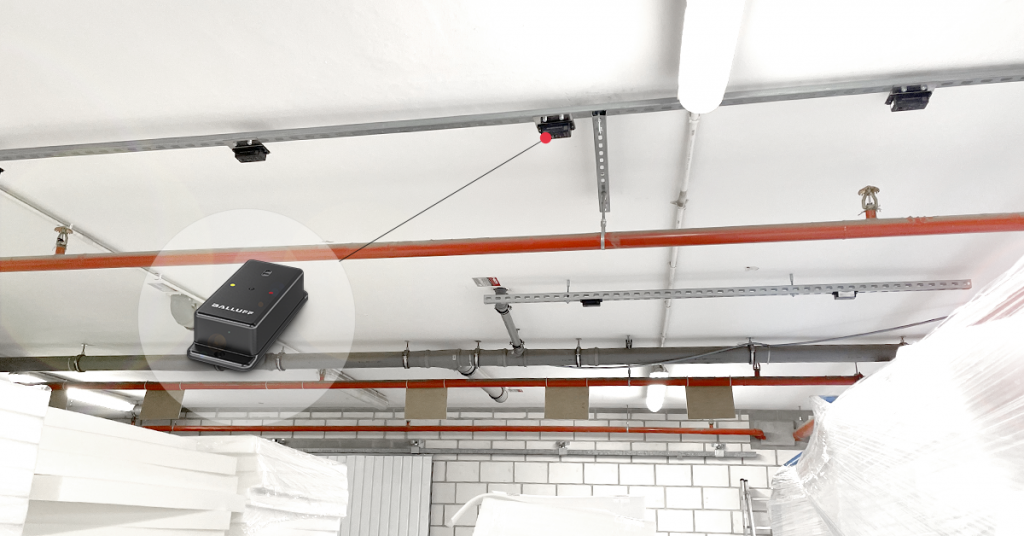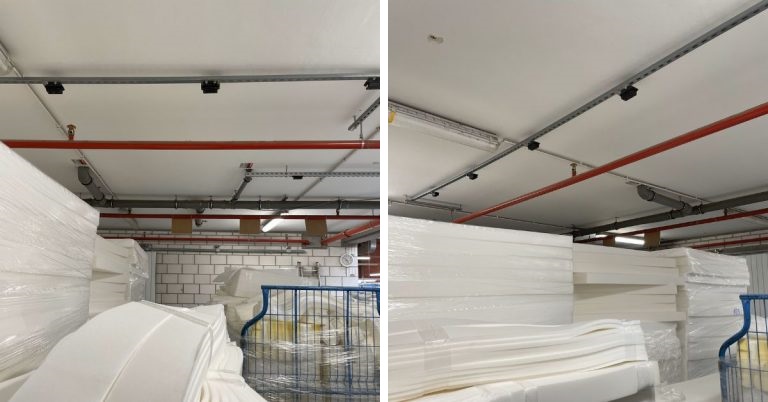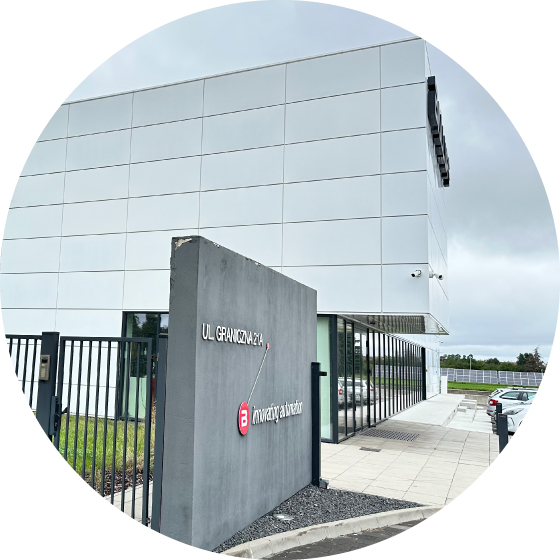Optimisation of the storage buffer in a furniture plant
Case Study
Reading Time: minutes
Process optimisation is one of the key elements of effective production management. Collecting and analysing data allows for more accurate planning of deliveries, thus avoiding downtime and increasing productivity. In the case of one of our clients, an upholstered furniture manufacturer, there were problems precisely with buffer optimisation. Variable orders and unsystematic retrieval of materials from this warehouse resulted in production downtime.

In this article, we will describe the solution we used to organise the buffer and ensure a smooth production process.
Stated situation
The client is a large upholstered furniture manufacturer that distributes its products both in Poland and abroad. The production facility consists of two large halls. The first one produces semi-finished products, such as foams, upholstery, frameworks or frames, while the second hall is used to assemble finished furniture. The two halls are separated from each other by a road and a driveway, and are connected by a large warehouse, or so-called production buffer. It is to this buffer that the materials from the first plant go, and it is from here that the second plant draws the materials needed at any given time to fulfill an order.
The problem
In theory, the above solution should work smoothly, but in practice, orders change frequently, resulting in unsystematic and unrepeatable retrieval of materials from the buffer. In addition, material handlers deliver what they are comfortable with, moreover, as much as they are comfortable with. This results in some materials being held on the buffer while others are simply in short supply.
As a result of such actions, production began to grind to a halt because the buffer lacked the materials needed to complete the order.
Solution
Arrange
The first step to solving the problem was to organise the production buffer. We assigned each material rigidly to a location where it should be stored, and equipped each location with a device to check for the presence of pallets of material. Within the first month of operation of these devices, we were able to monitor the amount of material in the warehouse and react in real time to the changing situation. As a result, we were able to minimise production downtime.
Based on the collected data, we were able to count the average number of picks of each material per day, as well as the time needed to replenish the buffer. As a result, we were able to determine exactly what minimum stocks we need to maintain on the buffer in order to keep production safe, and at the same time, not to fill up the warehouse.
The introduction of a structured buffer warehouse management system has allowed our client to process orders faster and minimise production downtime.

Monitoring
We offered the client a turnkey solution in the form of a Smart Reordering System (SRS). This system consists of wireless sensors, an Ethernet gateway and a proprietary application from Balluff developers that allows visualisation of current inventory levels and thus supports accurate production planning. The customer himself mounted the sensors on aluminum profiles where lighting had already been hung, which proves that the system is very easy to install.
The SRS system consists of:
BAV002P wireless sensors
Ethernet gateway BNI00J7
software BAI0027
How it works.
The wireless sensors communicate with an Ethernet gateway, which sends information to the software, enabling visualisation of current inventory levels. This allows those in charge of delivery to plan the production process more accurately.
Customer benefits
The benefits for the customer are significant. Thanks to SRS, it has been possible to reduce the amount of material stored in the buffer by 30 percent, which translates into A gain in the form of 30 percent of storage space. The customer is satisfied with the results and says that he could go down to practically 55 percent, however, he believes that this would be too much of a risk. The customer still has a time buffer, which allows production to continue even if there are any stumbling blocks.
Optimising the production buffer was necessary to improve the efficiency and productivity of the entire production process. By organising and improving the material management system, we were able to minimise production downtime and increase control over the availability of individual materials.
The key element needed for success was meticulous data collection and analysis, which allowed us to create a detailed action plan. The solutions used, such as assigning specific locations for materials and equipping them with devices to monitor the presence of pallets, proved to be very effective. They allowed for more precise management of materials, which contributed to increased production efficiency and reduced costs associated with downtime.
Where can this solution be applied?
The customer already has a few other ideas where it wants to apply the system. One of them is to use SRS to monitor bezels - wooden components that are transported on railcars. In this case, we intend to use a slightly different mechanism, but with wireless buttons that are part of the system.
Once such structures are loaded on the wagon, the person who is responsible for loading will report to the other department that they can already pick it up. Then a special vehicle will drive to the site, pick up such a wagon and transport it to a special ramp at the other plant, where one sensor is already installed.
The prospects for the development of SRS are very promising, and the customer is satisfied with the results of the system implementation.
Keywords
- Case Study
- Smart sensors
- Industrial automation
- Efficient production
Author

Balluff Sp. z o.o.
We have been active on the Polish market for more than 25 years. We serve our customers from Pomerania to the Tatra Mountains, providing first-class service and technical support. We are also present online, where we share our knowledge about the latest implementations, industry trends, events or technical aspects of our solutions.
41 Contributions
Comment
Popular posts
What is a capacitive sensor?
How do I wire my 3-wire sensors?
Industrial sensing fundamentals – NPN vs PNP
The industrial revolution - from the steam engine to Industry 4.0
Contact form
Do you have any questions or suggestions? We are at your disposal.
Balluff Limited
-
20 Cheshire Business Park
Cheshire Avenue
Lostock Gralam
Northwich, CW9 7UA
